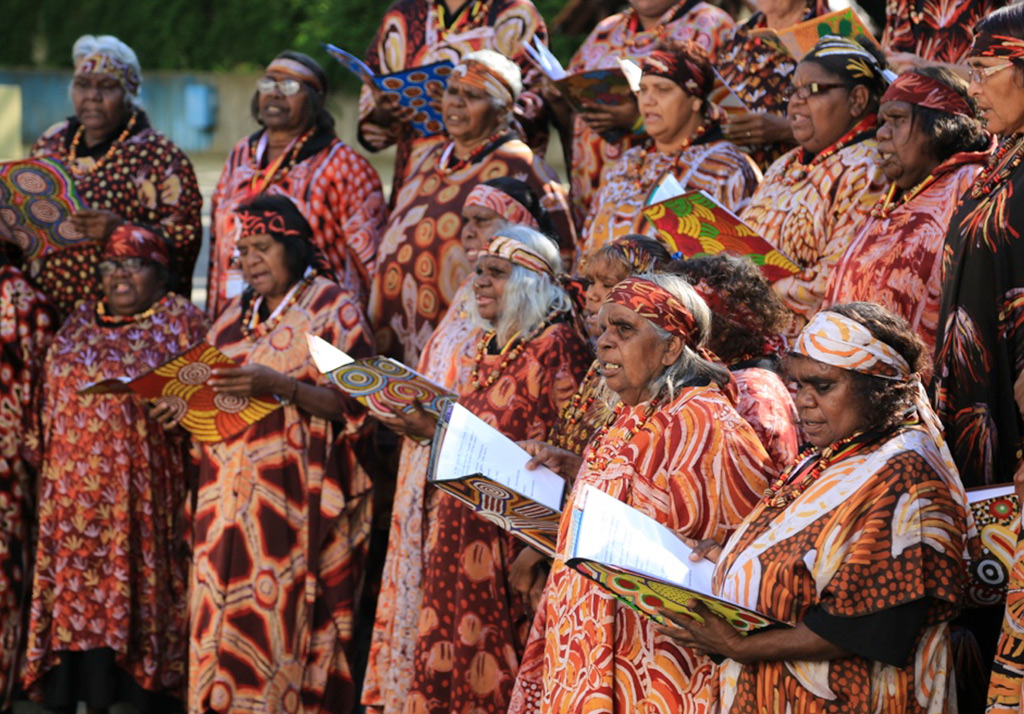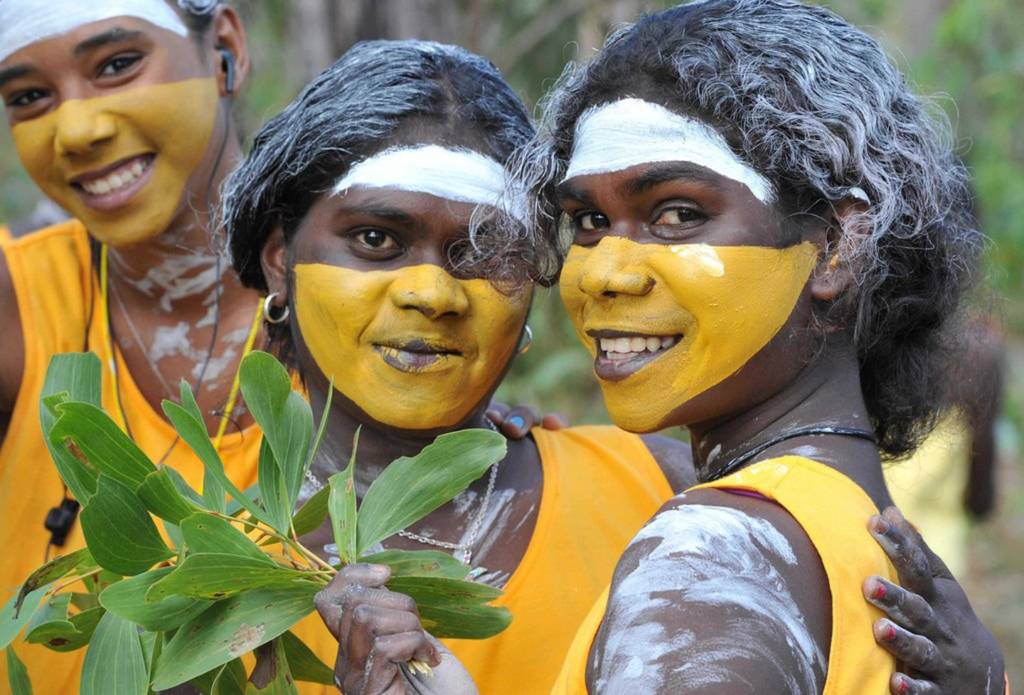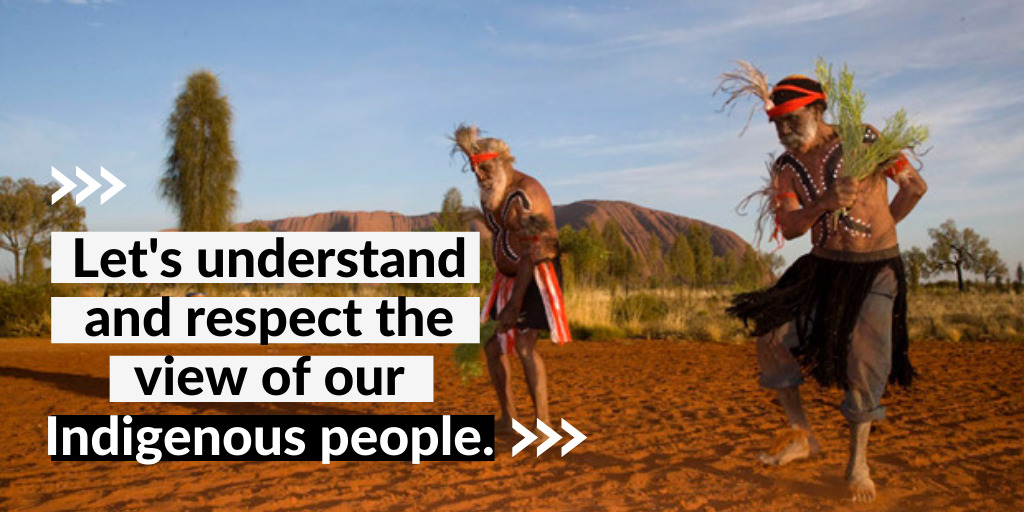Indigenous people of Australia have a strong cultural connection to the land. My research into Indigenous Australian Culture has led me to understand that when Indigenous people talk of Country, they refer to everything within the environment – landforms, waters, air, trees, rocks, plants, animals, foods, medicines, and minerals. They refer to the stories and all the special places that Traditional Owners speak for – the landscapes, resources and culturally significant places and other named sites. From this, I understand that Indigenous knowledge comes from Country, and it is passed down by ancestors.
Integrating Indigenous knowledge
How Indigenous people view Country can challenge non- Indigenous people understanding of the world. Over 60,000 years of observational knowledge has been passed down through the generations of our Indigenous people (CSIRO, 2020). While often observational knowledge is undervalued and dismissed because it has not been supported with scientific evidence, I believe integrating modern western science with traditional observational knowledge, can help build a more comprehensive knowledge base of the environment. Therefore, as Environmental Practitioners, it is vital that we learn to acknowledge, understand, and respect the view of our Indigenous people.
The multiple evidence-based approach graphic tool illustrates the idea of science and other knowledge being woven together to build a richer picture (CSIRO, 2020). Not anyone knowledge system alone could attain the holistic understanding that the sharing and weaving of different knowledge systems can. This reinforces the need for Indigenous engagement in environmental management planning.

Indigenous Principles
The Australian and New Zealand Guidelines (ANZG) for Fresh and Marine Water Quality highlight nine concepts that are common among Indigenous cultures, which emphasise the need for appropriate consultation with Indigenous people during planning and management (Australian Government Initiative, 2018). These principles should not be considered to represent the official views of all Indigenous communities. They should be used as guidance to help define and inform work on the protection of cultural and spiritual values, in not only water quality management, but for the management of all environmental aspects. Only from understanding and respecting these principles can environmental planning be designed in a way that considers the ancient knowledge of Indigenous people to protect environmental, cultural, and spiritual values appropriately.
#1 The living Earth
From my readings, I have understood that Indigenous people of Australia view the environment as a living entity. They talk about country in the same way that they would talk about a person: they speak to Country, sing to Country, visit Country, worry about Country, feel sorry for Country, and long for Country (CSIRO, 2020). It is important to understand and respect that Indigenous people acknowledge the environment as a living entity, as some aspects of the environment hold significant cultural value. ‘Living water’ is a term used by desert Aboriginal people to describe a permanent water body. If a permanent waterhole, a ‘living body of water’, is polluted or dries up due to over-extraction, the cultural significance of that water source could be diminished or lost forever.

#2 Traditional lore and customs
Traditional lore and customs may vary between tribes. Based on my readings, the stories, songs, and history of Indigenous people tell them where they have come from (creators, cultural heroes and ancestors) and where they are going. It is my understanding that while the knowledge and practices may vary between tribes, the ultimate teaching passed down through generations is to respect the lore of the land. Caring for Country is a custodial responsibility that is at the core of Indigenous culture. Therefore, it is important to understand and respect the traditional lore and customs that are unique to each Indigenous group.
#3 Indigenous language
It is important for environmental managers to understand and respect Indigenous people understanding of the environment and how it is significant to the local language and community. From my readings, I understand that sacred sites are often given their own distinct name, title, song, story, Dreaming and meaning. If a particular sacred site disappears, the traditional story linked to that site or site’s meaning in language could be lost forever.

#4 Traditional knowledge
The ancient knowledge of our Indigenous People is derived from a culture that has sustained the survival of its people for 60,000 years. It is my understanding that the traditional knowledge of Indigenous People comes from the many generations of habitation on traditional lands, which is evident through the deep relationship. Indigenous people have with their land, sky, and waters. As environmental practitioners, it is important to understand and respect this relationship and let it guide us towards best practice environmental management planning.
#5 Gender responsibilities
It is important to acknowledge and respect that Indigenous people have gender responsibilities. From my readings, I have come to understand that although men and women may share certain roles, they may also have separate responsibilities, and as their responsibilities differ, so do their stories, songs, and ceremonies. My interpretation of gender responsibilities has led me to believe that it may be traditionally unacceptable for men or women to know or hear about cultural activities of the opposite sex. Therefore, men and women maintain different understandings and knowledge about Country. As environmental practitioners, it is important to understand and respect that Indigenous people need to be culturally consulted on activities proposed that may intervene with the natural balance, as it may include gender-specific issues (men’s business and women’s business).

#6 Custodial responsibilities and wellbeing
Indigenous people have custodial responsibilities that ensure their people’s wellbeing and their ancestors (creators). I understand that these responsibilities are evident through the kinship system that mandates people’s obligation to care for the land and be custodians of one’s land, sky, and waters. It is essential to understand and respect the custodial responsibilities of Indigenous people as the wellbeing of Country supports the wellbeing of its people. Indigenous people are healthy when their Country is healthy and when they can contribute to the way it is managed.
#7 Intergenerational responsibilities
Through my readings, I have come to understand that Indigenous people have a responsibility to their ancestors, to care for and protect their land in a way that ensures its use for future generations, just as their ancestors did for them. This obligation to past and future generations is evident in today’s Indigenous people, by requesting a consultation with elders of Indigenous groups – to be advised of activities that may affect the next generation of their tribe. As environmental practitioners, it is important to understand, respect and help uphold this responsibility.
#8 Cultural evolution
Over time circumstances have changed, and so too have the cultures of our Indigenous people. It is my understanding that in many Indigenous communities, traditional social structures are still in place, but they have evolved to abide by the Australian governments’ systems of law (Australian Government Initiative, 2018). It is important to understand that Indigenous cultures are entrenched into their people’s way of life and adaptive. Indigenous people wish to be culturally, economically, environmentally, and socially sustainable in today’s sense.

#9 Connectivity
Having an understanding that Indigenous people believe that the land, sky, water and its people are inseparable is important for all Australians. I have come to understand that through stories and songs from their ancestors, Indigenous People recognize that the water which falls on the mountains ends up in the sea, either by surface movement or under the ground. Any interruption or change in quality to this cycle can be environmentally disastrous.
In the far north-east of Western Australia, the local Aboriginal people understand that the height at which crocodiles build their nests indicate the likely upcoming annual flood level (Goudie, 2004). Along the South Coast of New South Wales, Australia, the local Aboriginal people understand that if a certain Acacia species is in full bloom, then the bream are running. They also know that when the yellow-tailed black cockatoo flies north, a southerly change is coming and it is going to rain (Australian Government Initiative, 2018). It is important to understand this connectivity between the land, sky, water, and people; respect the ancient knowledge of Indigenous People, and influence environmental management planning.

How We Can Help
It is important that we take the time to listen and learn from the ancient knowledge of our Indigenous People. Building a better understanding of our environment will guide us towards discovering better ways of managing it. With a wealth of experience in implementing community engagement strategies and promoting positive relationships with Indigenous Communities, Integrate Sustainability can provide a range of advice and services associated with Indigenous engagement. If your company requires assistance, please contact us via enquires@integratesustainability.com.au or phone 9468 0338.
We acknowledge the Traditional Custodians of the land and waters of Australia, and pay respect to all Elders – past, present, and emerging.
References
Australian Government Initiative . (2018). About the Water Quality Guidelines. Retrieved March 25, 2020, from https://www.waterquality.gov.au/anz-guidelines/about
Bourges, S. (n.d.). Hands with red soil. Retreived from https://www.abc.net.au/news/science/2017-03-09/dna-confirms-aboriginals-have-long-lasting-connection-to-country/8336284.
Boyle, J. (n.d.). Seven Sisters. Retrieved from https://healthinfonet.ecu.edu.au/learn/determinants-of-health/environmental-health/
CSIRO. (2020). Our Knowledge, Our Way guidelines. Retrieved March 25, 2020, from https://www.csiro.au/en/Research/LWF/Areas/Pathways/Sustainable-Indigenous/Our-Knowledge-Our-Way
Foster, D. (n.d.). Indigenous Languages of Australia. . Retreived from https://www.australiangeographic.com.au/topics/history-culture/2016/04/speaking-up-australian-aboriginal-languages/.
Helen Davidson. (2015, October 26). Hymns ring out over Uluru on ‘bittersweet’ handback anniversary. Retrieved from The Guardian : https://www.theguardian.com/australia-news/2015/oct/25/uluru-bittersweet-handover-anniversary-indigenous-australians
indigenous.gov.au. (2012, Nov 1). Stronger Futures for Indigenous school kids in the NT. Retrieved from indigenous.gov.au: https://www.indigenous.gov.au/stronger-futures-for-indigenous-schools-kids-in-the-nt
Thompson, C. (n.d.). Lighting fires the traditional way in Arafura Swamp. Retrieved from https://stg.bushheritage.org.au/what-we-do/landscape-management/fire


